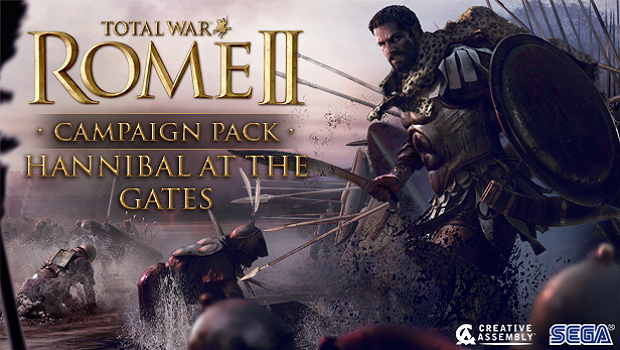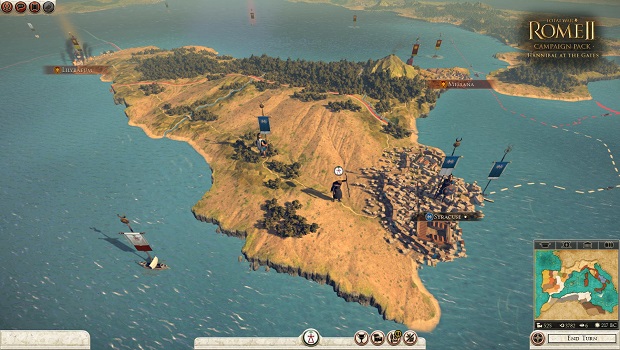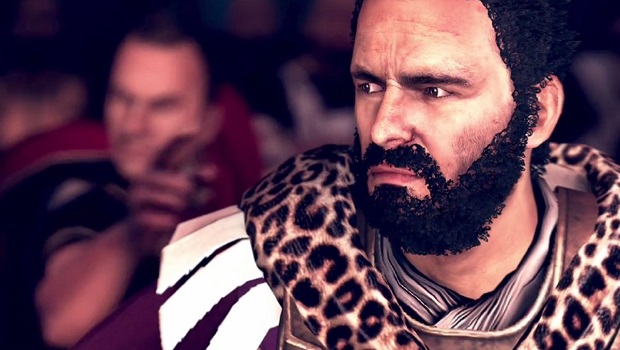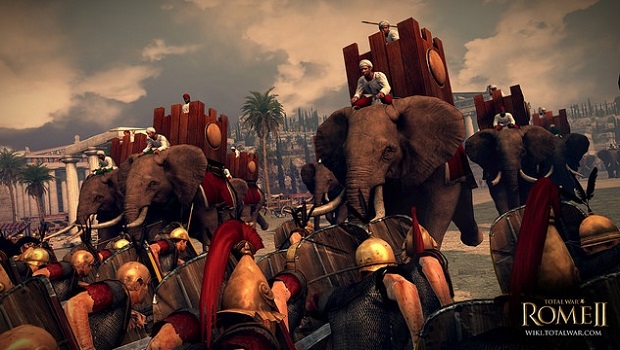It’s difficult to review an expansion to Total War: Rome 2 without making your piece a referendum on the game’s messy launch. While I liked the game at launch, it wasn’t on the same level as previous efforts, and there were numerous bugs. 12 patches and two expansions later, I find myself back on the battlefield, fighting out the epic clash between Rome and Carthage in Hannibal at the Gates.
Hannibal at the Gates focuses the action on the western environs of the Mediterranean, rewriting the map in order to focus on the area. I’m a big fan of the new map. Sicily is a province separate from Italy now, with Syracuse as its main city. This means that Syracuse becomes the walled behemoth it was historically. Spain, southern Gaul and Italy are similarly expanded. I will say the move to the west is a bit odd from a historical perspective; the Second Punic War was a wider conflict, Rome forced to split its focus even under threat of extinction from Carthage and look east to the Macedonian threat to its interests in the Adriatic and Greece.
Still, I’m not sure zooming the map in works to Total War: Rome 2’s strengths. With the focus on single, powerful armies and the inability to detach units, the new campaign still plays to the same mega-battle scope that the core game’s campaign does. There won’t be an skirmishes, scout units, or rearguards. The focus will be on epic battles, which will almost always occur around cities. It’s nice that all the battles seem to be big and important, but it also makes the campaigns feel empty.
The campaign provides some compelling opening situations. Syracuse is playable, providing the challenge of an allied Rome occupying all of the surrounding territory. Do I attack a powerful and close ally? Do I move my armies to north Africa? Do I bide my time, and jump at the right moment on the side of the winner of the Rome and Carthage struggle? There are some cool options with that tiny state. That said, Carthage and Rome are divided by quite a few small city states. As Carthage, I played the campaign for maybe 10 hours before I even engaged a Roman force (something that, given the time scope of the game, should have occurred within the first couple of hours). Such a delay of the supposedly epic confrontation was unfortunate.
I can happily report that the battles seem now to be bug-free and the high point of play. The numerous issues which plagued the game at launch have been largely solved. The enemy AI makes a competent opponent (though its weaker strategic game tends to put it on the losing end rather frequently). The focus on Carthage and northern Africa in the campaign emphasizes their colorful units, especially elephants, and the expansion adds a few units (both to this campaign and the game’s core campaign and multiplayer). If you were looking for this expansion as an excuse to jump back in and see if the battles were finally running at full speed, this is definitely it.
Hannibal at the Gates provides some new challenges, some fun units, and a focused look at the Western Mediterranean. Coming back to the release as a referendum on the massive number of patches: this game is an unqualified success. It works the way it was intended. Still, a focused look reveals a few warts in the system. A strategic army model at an operational scale feels funny, and as I often found myself playing as Carthage, that Rome was less my primary goal as expanding my empire (which would eventually include Rome). It lacked that life-and-death, tooth-and-nail, Delenda Est Carthago feeling that the conflict should have. Still, as a reason to hop back into the game and try it after 12 significant patches, this is certainly the way to go.
Hannibal at the Gates was reviewed using code provided by the developer.



